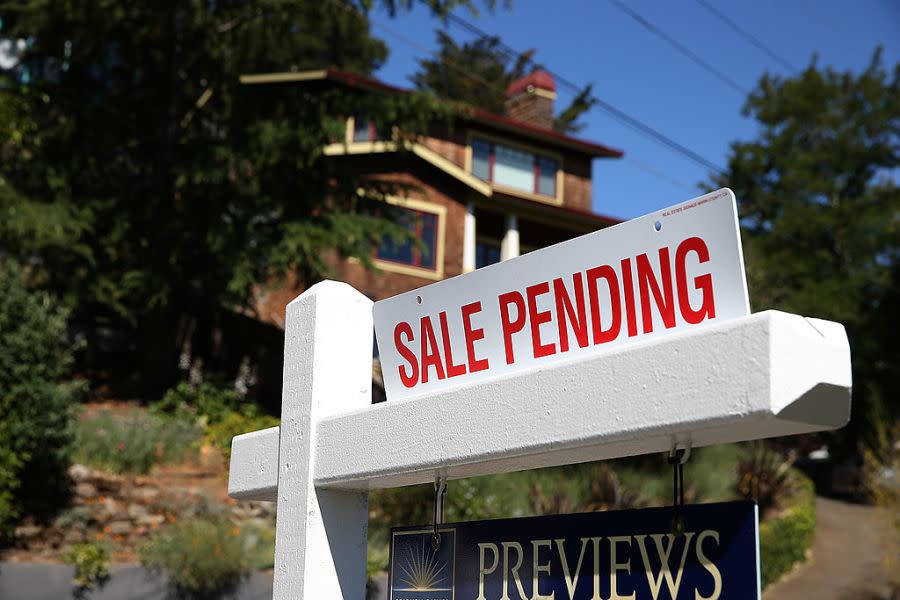Housing costs push inflation higher for the first time this year
Consumer prices in July ticked up for the first time this year as housing costs and services pushed back against a rapid decline in annual inflation.
Prices in the consumer price index (CPI) rose to a 3.2 percent annual increase in July from 3 percent in June, the largest upward movement since June of last year.
Despite the speed bump on inflation’s yearlong descent, the increase was still less than analysts’ expectations at 3.3 percent. The monthly advance of 0.2 percent was exactly in line with what economists had predicted.
“Core” CPI, which removes the harder-to-predict categories of food and energy prices, advanced just 0.2 percent in July — the same small increase as in June — buoying hopes that the U.S. economy can tame inflation without sinking into a recession.
Three-month core CPI is just a hair more than the Fed’s 2 percent target range at 3.1 percent and falling, economists noted.
Bright spots in Thursday’s numbers from the Labor Department were faster deflation in core commodity prices along with cheaper eggs, chicken and toys.

Housing costs are still a reason for concern following 11 interest rate hikes by the Federal Reserve, which have hit financing-dependent sectors of the economy particularly hard.
“The index for shelter was by far the largest contributor to the monthly all items increase, accounting for over 90 percent of the increase,” the Labor Department noted.
Here’s a breakdown of the report.
Housing is the Achilles’s heel of falling inflation
Housing and shelter costs are a main driver of core CPI, accounting for around 40 percent of the index that the Federal Reserve pays special attention to in weighing whether to press ahead with rate hikes.
While primary-residence rent fell to a 0.4 percent increase from 0.5 percent in June, the broader measure of owners’ equivalent rent accelerated to a 0.5 percent increase in July after falling the previous month.
This resulted in core service prices increasing 0.4 percent.
“The pick-up in core services inflation to 0.4 percent month-over-month from 0.3 percent in June will be seen by the Fed as grounds for caution,” said Brian Coulton, chief economist with Fitch Ratings.
“Rents just don’t seem to be slowing by much at all on a month-to-month basis and, given the 34 percent weight of shelter in the CPI, this is significant,” he said.
Automobile costs also drive the upswing
Motor vehicle maintenance and repairs jumped 1 percent on the month and were 12.7 percent higher than they were a year ago, far outpacing the overall disinflationary trend of the past year.
Prices for car repairs taken by themselves were 19.5 percent higher than they were last year, increasing by 1.4 percent from June to July.
Car insurance costs increased 2 percent last month, accounting for a 17.8 percent annual increase.
The Labor Department said that soaring care insurance prices were also contributing to the hot headline number.
Deflation in core goods accelerates
Meanwhile, commodity prices were headed in the opposite direction, with deflation in core commodities getting faster.
Removing the food and energy categories, commodity prices fell by 0.3 percent in July, down from 0.1 percent in June.
Household furnishings and supplies were down, furniture and bedding prices were cheaper, and major appliance prices were down as well.
“This is likely to continue with the distress in China and other exporters seeking market share. It will be a very tough competitive environment out there now,” Westwood Capital managing partner Dan Alpert wrote online Thursday.
Nursing homes grow more expensive
Prices for nursing homes and elder care facilities rose 2.4 percent in July and were up more than 5.6 on the year — another services sector that is bucking the trend of falling inflation.
Costs for caring for people who cannot take care of themselves rose a half-percent on the month and 4.7 percent on the year.
Inflation is now a referendum on housing costs
As the Labor Department noted, the inflation story for July is all about housing costs, with the vast majority of the headline increase coming from shelter — the sector perhaps most closely tied with Fed rate hikes.
With deflation accelerating in core commodities and 90 percent of monthly increase attributable to housing prices, the picture of a disaggregated and compartmentalized inflation is coming more fully into relief.
“Look at the sectoral patterns, we have not seen an across-the-board rise in inflation in prices, which is sort of the classic inflation pattern. We’ve seen prices increasing in very specific parts of the economy with different patterns,” economist J.W. Mason of John Jay College at The City University of New York said during an event earlier this year.
The Federal Reserve seems to be aware of these dynamics despite its blanket approach to addressing inflation, which has been exacerbated by outsized profits, through interest rate hikes.
“We have been seeing the effects of our policy tightening on demand in the most interest rate-sensitive sectors of the economy, particularly housing and investment,” Federal Reserve Chairman Jerome Powell said at the end of July, after raising rates for the 11th time.
“Clearly, higher rates have slowed the housing market,” he said.
For the latest news, weather, sports, and streaming video, head to The Hill.
